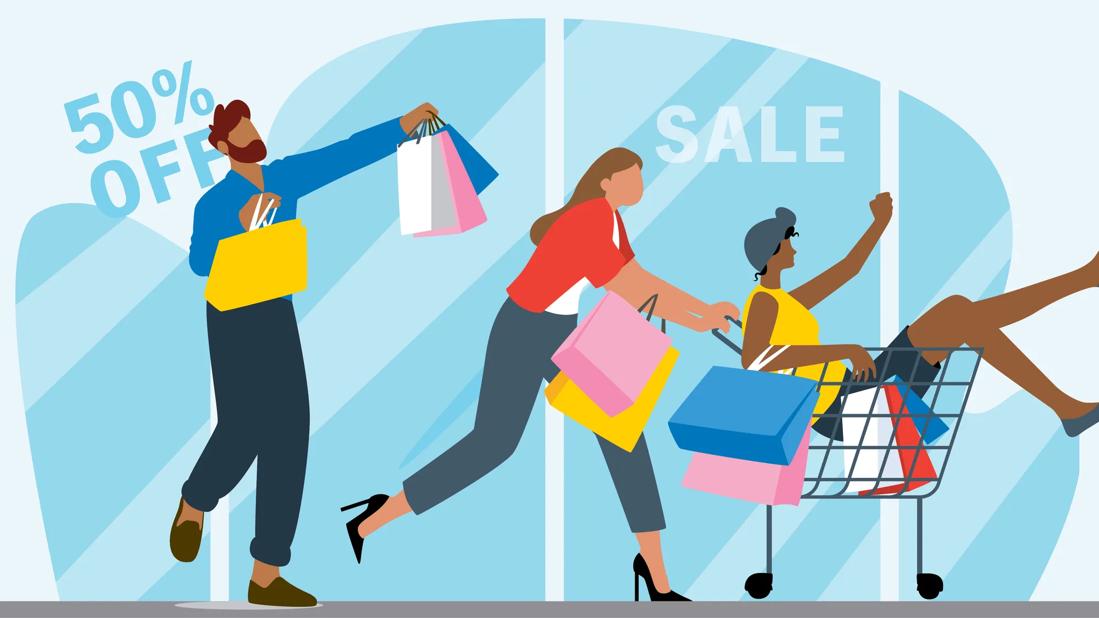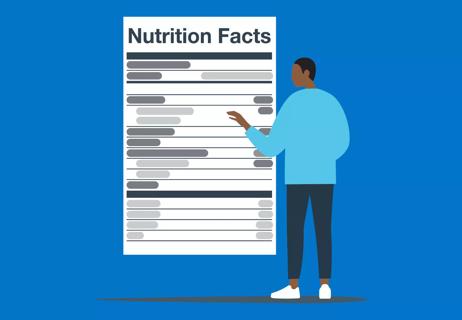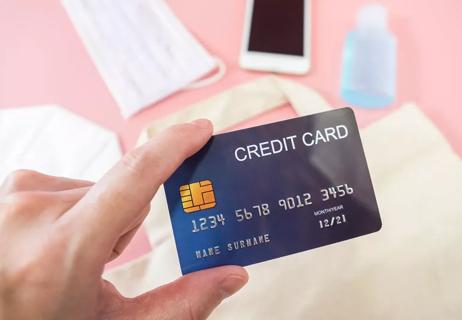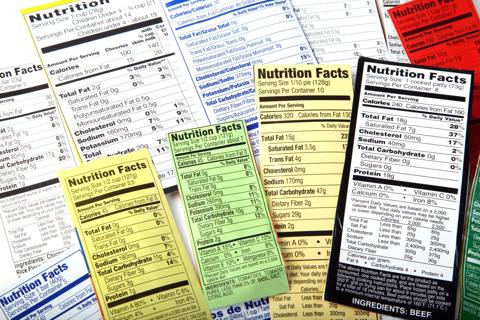Signs you’re a compulsive spender include lying about purchases, buying things you don’t use and treating shopping like a hobby

It’s not unusual to hear people describe themselves as “shopaholics.” And many enjoy a little “retail therapy” from time to time.
Advertisement
Cleveland Clinic is a non-profit academic medical center. Advertising on our site helps support our mission. We do not endorse non-Cleveland Clinic products or services. Policy
We often use these turns of phrase to joke about occasional overspending. But that doesn’t mean compulsive shopping — also known as shopping addiction or oniomania — isn’t a real and serious mental health concern. It is.
Yes, compulsive shopping is a real thing. We sometimes trivialize shopping addiction or treat it as a character flaw. But that’s not right or fair to those living with the condition. And that’s a lot of people: A 2016 study in the journal Addiction found that about 5% of adults are compulsive shoppers.
Shopping, like many behaviors, can be healthy or unhealthy. The 5th edition of the Diagnostic and Statistical Manual of Mental Disorders (DSM-5) only recognizes some compulsive behaviors — like compulsive drinking (alcohol use disorder) — as official mental health conditions. Overspending doesn’t make the list, but that doesn’t make the behavior any less destructive.
“Shopping often becomes a way of coping with stress, anxiety and depression,” psychologist Susan Albers, PsyD, explains. “Spending money is a way to fill emotional voids, escape from negative emotions and experience a temporary boost.” But when the dust settles, you’re left to deal with the consequences. And the consequences can be life-altering.
Advertisement
Addiction always has a biological component. Dr. Albers says that when you buy something, your brain releases dopamine and endorphins, making you feel good. But that feeling fades fast.
“The enjoyment you get is from the experience of making a purchase, not so much from the item itself,” she notes. “When people shop compulsively, they’re seeking that thrilling sensation over and over again — and trying to prevent the crash.”
Anyone can experience addiction, but Dr. Albers says certain things may raise your risk for compulsive shopping:
Of course, plenty of people fit these criteria but aren’t compulsive shoppers. So, how do you know if your shopping habits are unhealthy?

“The difference between compulsive spending and healthy purchases is intention and consequences,” Dr. Albers clarifies. “With healthy shopping, we purchase the things we need in a calm and planned manner. Compulsive shopping, in contrast, is done with a sense of urgency. There is an emotional trigger and purchases often result in emotional or financial distress.”
Oniomania may be hard to spot because shopping isn’t an optional behavior. We all do it. And every day, we wade through advertisements encouraging us to do more of it!
We also live in a materialistic culture that treats wealth and success like they’re the same thing. It’s natural (to a point) to want to keep up with the Joneses — and plenty of people live beyond their means. So, how do you know when your behavior is crossing a line? Dr. Albers says the following are telltale signs:
Advertisement
If you see yourself in this list, you’ve already taken a big step: You’ve acknowledged that your behavior is concerning. While you may feel powerless, you aren’t. You can do something about it. Now, it’s time to do something about it.
So, you have an unhealthy relationship with shopping. Now what?
First, you need to decide if this is a behavior you can change on your own. If you feel like you don’t have control over your actions, skip to seeking professional help.
If you do think you can build healthier habits, start experimenting. Behavior change can be tough. And not every trick will be effective. Take what works, modify as needed and leave the rest!
Advertisement
As with any compulsive behavior, wanting and trying to stop isn’t always enough. If your efforts to address your shopping addiction have been unsuccessful, it’s time to seek professional help.
“Asking for support can be difficult — and may even feel a bit embarrassing,” Dr. Albers recognizes. “But it’s a sign of strength, not weakness.”
Not sure where to start? Read on.
Work with a therapist
Most people with shopping addictions have something going on in their life that needs attention. Whether that something’s a history of trauma, a stressful home life, hoarding or an untreated mental health condition, it’s worth discussing with a mental health professional.
“Not only can a therapist help you understand and address the behavior, but they can also teach you healthier coping skills,” Dr. Albers explains. If your therapist suspects you have a mental health disorder, they may refer you to a psychiatrist, or recommend treatment approaches similar to those used for obsessive-compulsive disorder.
We sometimes assume that shopping addiction is a less serious compulsive behavior, but, again, that isn’t true. A 2021 study suggests nearly 20% of people living with a shopping-buying disorder experience suicidal ideation. If you’re thinking about hurting yourself or somebody else, reach out for help now.
Advertisement
If you’re in extreme distress, call 911 or go to the nearest emergency room immediately.
Turn to SAMHSA (if you live in the US)
The U.S. Department of Health & Human Services Substance Abuse and Mental Health Services Administration (SAMHSA) has resources to connect people who need help with providers. You can:
Seek financial help
Depending on your financial situation, you may consider reaching out to financial therapists, financial advisers, bankruptcy attorneys, credit counselors, etc. Just be cautious: There are plenty of not-so-reputable people and companies out there that prey on people in dire financial straits.
There’s nothing wrong with occasionally splurging, treating yourself or adding to a treasured collection when you’re a little down. Like a generous slice of grandma’s apple pie, a night out dancing with friends or a romantic date night, shopping releases mood-enhancing chemicals in our brain. The occasional big spend or impulsive purchase probably isn’t something you need to worry about.
In moderation, retail therapy can be relaxing, rewarding and empowering. It can become a problem when:
Not sure if your buying behavior has crossed the boundary into addiction? Ask people who care about you — or a mental health provider. You may be dealing with a shopping-buying disorder. If not, take that niggling concern as a sign that you’re ready to discover the mental health benefits of window shopping. Either way, you’re performing a worthwhile act of self-care.
Learn more about our editorial process.
Advertisement

An occasional shopping spree can boost your mood by distracting you from stressors and pumping your brain full of ‘happy hormones’

Information on serving size, calories and nutrients can help you make healthy choices

Whole-grain options low in sugar and sodium form the foundation of a good-for-you breakfast

From planning ahead to resisting bargains, these tips could also save you money

All it takes is a little planning

Avoid bringing bacteria home

4 ways to identify foods that are (actually) good for you

It isn’t a recognized mental health disorder, but research shows that problematic social media use can negatively affect your mental health, self-esteem and sleep

The best parenting style balances enforcing rules and showing plenty of love

Tips include cutting back on sugar, focusing on exercise and managing stress

It can be harder to let go when you’ve invested time, energy and emotions — but it might be the healthier choice long term